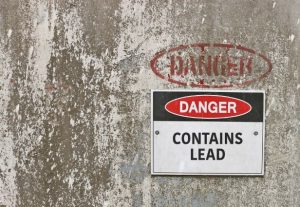National Lead Poisoning Prevention Week was established by Congress in 1999 to occur each year during the last week in October.
“Lead can cause irreversible and life-long health effects, including decreasing IQ, focus, and academic achievement in children,” reports the EPA. “While lead is dangerous to all children, not all children are equally exposed to lead, nor do they suffer the same consequences of exposure. The harmful impacts of lead disproportionately impact environmentally overburdened, low-income families and their communities.”
A whole government approach is quickly becoming the hallmark of the Biden administration, and strategies to reduce lead exposure in children are marked by the EPA working closely with other federal agencies such as the Department of Housing and Urban Development (HUD) and the Centers for Disease Control and Prevention (CDC).
In commemorating this year’s Lead Poisoning Prevention Week, the EPA announced the following actions:
- “Releasing a National Strategy to Reduce Lead Exposures: EPA will soon be releasing a ‘Draft Strategy to Reduce Lead Exposures and Disparities in U.S. Communities’ for public comment. The Strategy will advance the Agency’s work to protect the public from lead with an emphasis on high-risk communities.
- Reviewing the Lead and Copper Rule: EPA is reviewing its current Lead and Copper Rule, to assure that it improves public health and reduces lead and copper in drinking water. The Agency hosted a series of virtual engagements with low-income communities and communities of color to obtain further public input on the Lead and Copper Rule Revisions.
- Addressing Lead in Drinking Water: EPA will be issuing guidance to assist states and communities in identifying lead service lines, the most significant sources of lead in drinking water, and prioritizing their replacement.
- Testing for and Remediating Lead in Schools and Childcare Facilities: EPA will be working with partners to test for lead in the drinking water of schools and childcare facilities, and to provide tools and resources for remediation actions.
- Working with Drinking Water Service Providers: EPA will provide training and technical assistance to drinking water service providers to protect children and households in impacted communities and will help providers improve outreach to drinking water consumers to take actions to reduce their lead exposure.
- Cleaning up Lead at Superfund Sites: EPA has identified nearly 1,200 Superfund National Priorities List and Superfund Alternative Approach sites where lead is a contaminant of concern, potentially exposing children in communities across the country. EPA will continue working across all our national programs to reduce lead exposure at these sites with an emphasis on addressing disproportionate impacts in communities with lower socioeconomic status.
- Reducing Exposures to Lead-Based Paint Hazards: EPA will continue to reduce exposures to lead in paint and dust by raising awareness about childhood lead exposure with a nationwide education and outreach initiative in underserved communities, and by revising two regulations to provide important provisions to protect children from exposure to lead dust on floors and windowsills, one of the most common sources of elevated blood lead levels in children.
- Taking Lead Enforcement Actions: EPA will continue to initiate enforcement actions to protect against children’s health hazards in areas such as exposure to lead paint, the presence of lead and other contaminants in drinking water, and particulate lead air emissions.
- Renovation, Restoration and Painting (RRP) Trainings – EPA is also offering trainings for renovators at no cost.”
Additionally, the EPA released information about recent settlements it has reached with two Connecticut companies that allegedly violated the RRP rule. “The rule requires workers to be certified and trained in the use of lead-safe work practices, and requires renovation, repair, and painting firms to be EPA-certified,” according to the EPA’s RRP Rule website.

